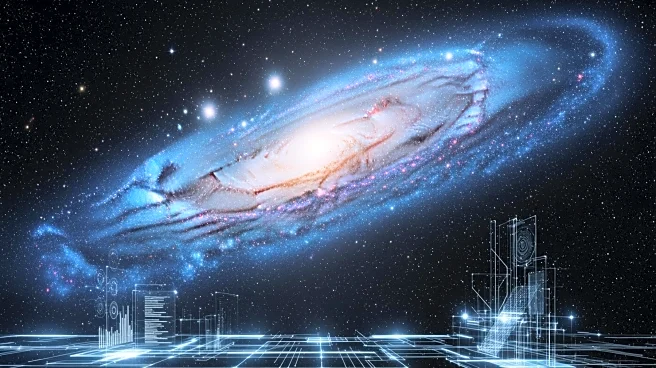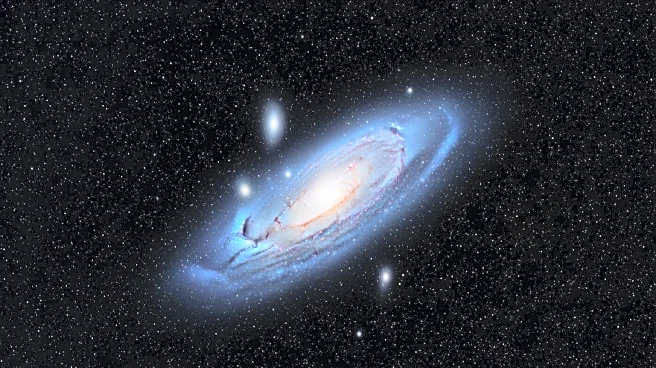What's Happening?
A team of researchers led by Keiya Hirashima at the RIKEN Center for Interdisciplinary Theoretical and Mathematical Sciences in Japan has created the first simulation of the Milky Way capable of tracking
over 100 billion individual stars. This achievement was made possible by combining artificial intelligence with advanced numerical simulation techniques, allowing the model to include 100 times more stars than previous simulations. The work was presented at the international supercomputing conference SC '25, marking a significant advancement in astrophysics and high-performance computing.
Why It's Important?
This breakthrough in simulating the Milky Way represents a major step forward in understanding galactic evolution and structure. By providing a detailed model of the galaxy, researchers can better compare theoretical predictions with observational data, potentially leading to new insights into star formation and galactic dynamics. The use of AI in this context also highlights the growing role of machine learning in scientific research, offering new tools for tackling complex, multi-scale problems across various fields.
What's Next?
The success of this simulation opens the door for similar AI-assisted modeling approaches in other areas of science, such as climate and weather research. As researchers continue to refine these techniques, we can expect further advancements in the accuracy and efficiency of large-scale simulations. Additionally, the integration of AI into astrophysics may lead to new discoveries about the universe, as well as improved methods for studying other complex systems.
Beyond the Headlines
The use of AI in astrophysics raises questions about the future of scientific research and the potential for AI to complement or even surpass human capabilities in certain areas. As AI becomes more integrated into scientific processes, ethical considerations regarding data interpretation and the role of human oversight will become increasingly important. This development also underscores the need for interdisciplinary collaboration, as AI and traditional scientific methods converge to tackle complex challenges.












